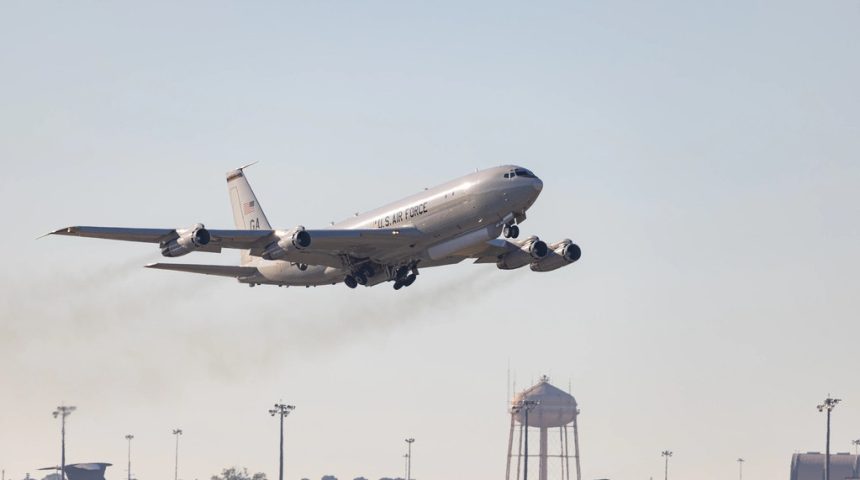After 32 years and 141,000 flight hours, the Joint Surveillance Target Attack Radar System will be replaced by a network of satellites, aircraft sensors and ground radars.
Two months about the type’s final operational mission, the E-8C JSTARS has now flown for the last time with the U.S. Air Force on Nov.15, 2023, when the last aircraft departed Robins Air Force Base, Georgia. For 32 years, the Joint Surveillance Target Attack Radar System provided invaluable intelligence, guiding strategic decisions on the ground and enhancing operational effectiveness, said the Air Force.
The E-8C was created by modifying the Boeing 707-300 with the APY-7 active electronically scanned array side looking airborne radar, specialized communications, operations and control subsystem, making it able to track the movement of ground forces around a region and share that information with other aircraft and troops. Because of these capabilities, the aircraft is the second longest-deployed Air Force asset, with an 18-year continuous deployment in the CENTCOM area of responsibility.
First employed during Operation Desert Storm when it entered service in 1991, the E-8C played a key role during the war in Afghanistan and Iraq and flew the last operational missions in Europe to collect intelligence about the war in Ukraine. In fact, since the beginning of the Russian invasion, the E-8C flew continuously gathered intelligence and monitored Russian military activity to get a better understanding of the situation.
The Air Force announced the type’s retirement in 2021, with the first aircraft leaving Robins Air Force Base a year later. The JSTARS, however, is not going to be replaced by another specialized aircraft, as the service abandoned the idea in 2019. The role of the E-8C will be taken over by a network of satellites, aircraft sensors and ground radars that can collect the same targeting and tracking data.
The 116th Air Control Wing, 461st Air Control Wing, and the former 93rd Air Control Wing held a sunset celebration for the retirement of the E-8C at Robins AFB earlier this month, whose last aircraft later departed to Kelly Field, Texas, where it will serve as a training aircraft for future Airmen. The base is now receiving the E-11A Battlefield Airborne Communications Node, as well as a Battle Management Control squadron, a Spectrum Warfare group and support units focused on the Advanced Battle Management System (ABMS) to take on new missions.









